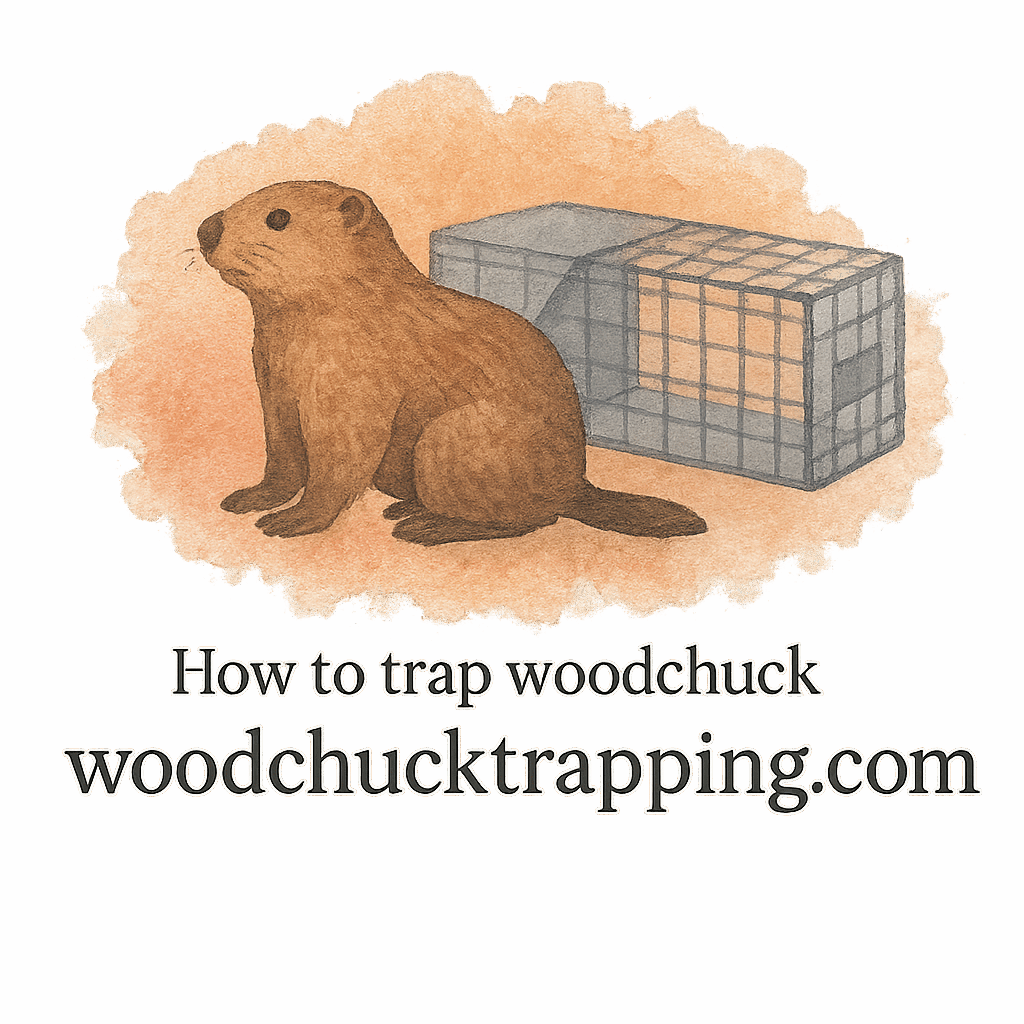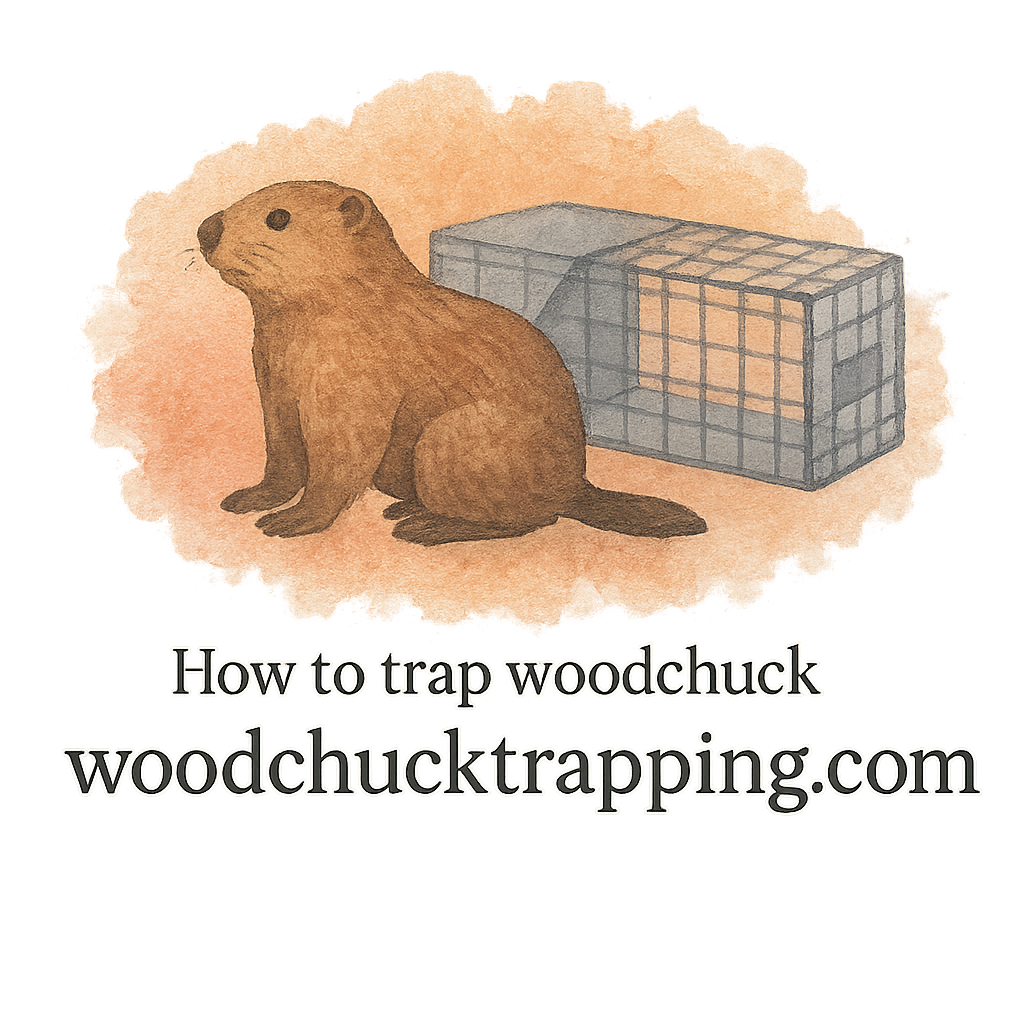Introduction
If you’ve ever spotted a chunky little woodchuck waddling through your yard, you know they can be both cute and destructive. These furry diggers leave behind massive burrows, chew through gardens, and cause structural damage if ignored. Traditional traps may come to mind, but here’s the truth: there are safer, kinder, and equally effective humane alternatives to woodchuck trapping.
In this guide, we’ll explore 10 practical, humane methods to deal with woodchucks without resorting to harsh traps. Not only will this help you keep your property safe, but you’ll also handle the situation responsibly and ethically.
Understanding Woodchuck Behavior
Before we dive into solutions, it’s important to understand why woodchucks act the way they do.
Why Woodchucks Invade Yards
Woodchucks, also called groundhogs, are naturally attracted to lush gardens, vegetable patches, and soft soil perfect for digging. Your backyard might look like a buffet to them, especially if you grow leafy greens or fruiting plants.
Common Signs of Woodchuck Infestation
Some telltale signs of a woodchuck problem include:
- Large burrow entrances near sheds or decks
- Nibbled vegetables or flower beds
- Trails leading to dens
- Soil piles from digging activity
Spotting these early can save you from bigger problems later.
Why Choose Humane Alternatives Over Traditional Trapping
Ethical Considerations
Traditional traps can cause unnecessary stress or even harm to woodchucks. Opting for humane approaches respects wildlife while still protecting your yard.
Safety Concerns with Conventional Traps
Standard traps may accidentally capture pets or other wildlife. Plus, handling a trapped animal can be risky without the right skills.
Humane Alternatives to Traditional Trapping
Let’s break down 10 proven humane strategies.
1. Habitat Modification
One of the simplest ways to prevent infestations is to make your yard less inviting.
Removing Food Sources
Harvest ripe vegetables quickly and secure compost bins. If you leave goodies out, woodchucks will gladly move in.
Blocking Burrows Effectively
Locate and fill old burrows with gravel or soil. For active ones, wait until you’re sure it’s empty before sealing.

2. Motion-Activated Deterrents
Sprinklers or lights that activate when they sense movement can startle woodchucks without harming them. It’s like giving them a “keep out” sign powered by technology.
3. Natural Repellents and Scents
Woodchucks dislike strong odors. Consider using predator urine, garlic sprays, or scent bait blends to make your garden less appealing.
4. Humane One-Way Exclusion Doors
These devices allow woodchucks to exit their den but block re-entry. Think of it as a one-way ticket out of your yard.
5. Installing Fencing and Barriers
Choosing the Right Fence
A sturdy fence about 3 feet high, with mesh buried at least a foot underground, can stop woodchucks from tunneling.
Tips for Securing the Ground
Angling the bottom outward discourages digging. This method works wonders in small yards where space is limited.
6. Companion Planting as a Deterrent
Woodchucks aren’t fans of strong-smelling plants like lavender, mint, or garlic. Interplanting these around your garden creates a natural barrier.
7. Habitat Relocation through Professionals
Sometimes, the best option is to call wildlife experts who know how to trap and relocate animals safely.
8. Encouraging Natural Predators
Hawks, foxes, and owls are woodchuck’s natural enemies. Creating habitats for these predators can keep populations in check without direct human interference.
9. Using Humane Lures Strategically
Instead of baiting traditional traps, try luring woodchucks toward safer exits or decoy feeding zones. This redirects them without harm.
10. Creating Alternative Feeding Zones
Set up a separate feeding spot far from your garden with clover or alfalfa. By satisfying their hunger elsewhere, you protect your main yard.
Tools and Equipment for Humane Methods
Choosing the Right Tools
Whether you’re setting up fences, exclusion doors, or deterrent devices, make sure you pick reliable trap gear and other tools designed for humane control. Check equipment reviews before buying.
Safety Gear for Handling Situations
If you need to interact with areas where woodchucks have been, wear gloves and other protective gear. This reduces the risk of disease or accidental bites.
Preventing Future Woodchuck Damage
Long-Term Yard Maintenance
Keep grass trimmed, remove debris, and check fences often. Regular maintenance reduces the likelihood of infestation.
Seasonal Checks for Burrows
Inspect your property every spring and fall. Filling small holes quickly prevents them from becoming full dens.
For more prevention tips, see this resource on damage prevention.
Legal and Safety Considerations
Local Laws on Wildlife Control
Before trying any trapping or relocation, review your state’s wildlife regulations. Many areas require permits. Check out laws and safety for guidance.
Staying Safe While Implementing Humane Methods
From handling gear to avoiding bites, always prioritize safety. For example, use handling techniques recommended by professionals.
Conclusion
Woodchucks may be adorable, but their digging and chewing can cause real headaches. The good news? You don’t have to resort to harsh traps. By using these 10 humane alternatives to traditional woodchuck trapping techniques, you can safeguard your property while respecting wildlife. From fencing to repellents, exclusion doors to companion planting, there’s a solution for every yard size and situation.
Taking a proactive, humane approach ensures both your garden and local woodchuck populations can thrive without conflict.
FAQs
1. Are humane alternatives really effective for woodchucks?
Yes! When used consistently, humane methods can be just as effective as traditional traps, often with longer-lasting results.
2. What’s the best humane method for small yards?
For minimal space situations, fencing and exclusion doors usually work best.
3. Do natural repellents harm woodchucks?
No, natural repellents like garlic sprays or predator scents simply make your garden less appealing.
4. Can I relocate woodchucks myself?
It’s risky and often illegal without a permit. Always check laws and safety before attempting relocation.
5. How can I tell if a burrow is active?
Look for fresh dirt around the entrance or recent tracks. For expert advice, see guides on burrows.
6. Do motion-activated sprinklers work year-round?
They’re most effective during warm months when woodchucks are active.
7. Where can I learn more about humane trapping techniques?
Visit this detailed guide on trapping techniques for more insights.


